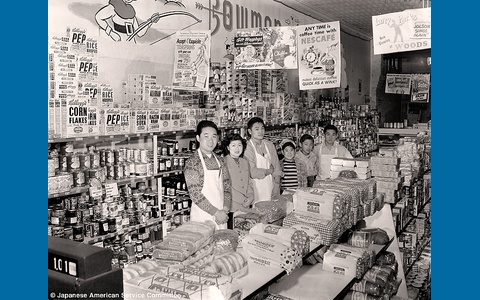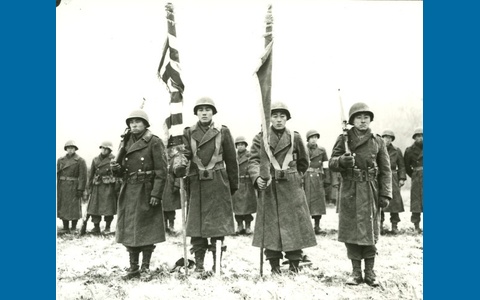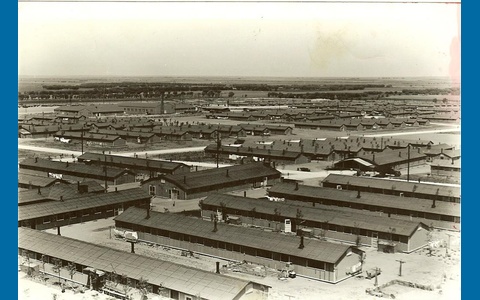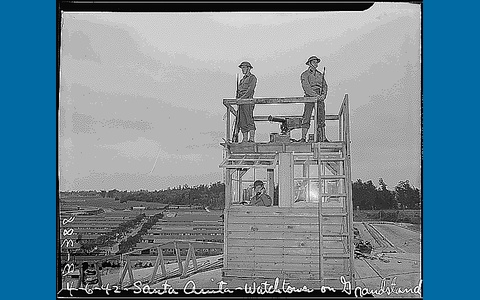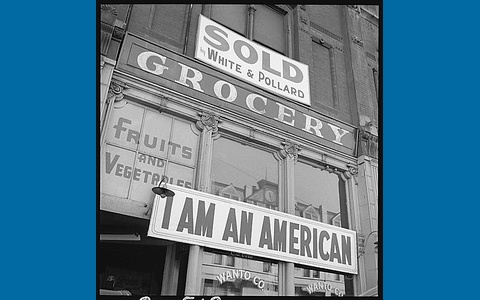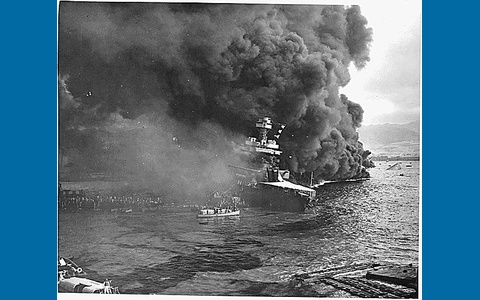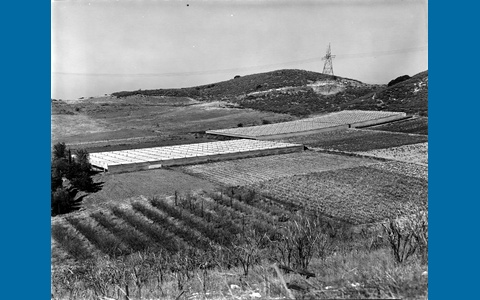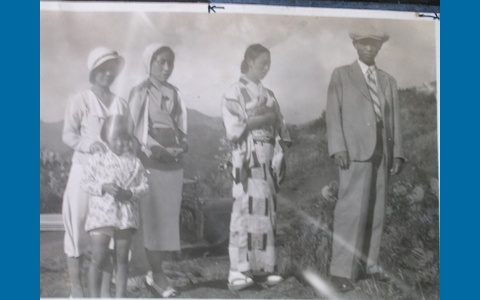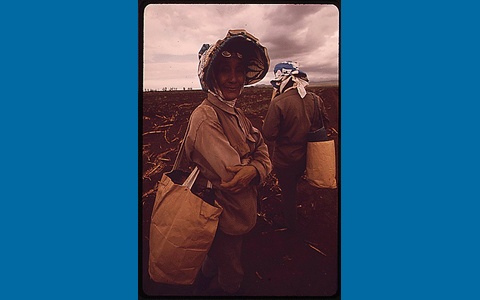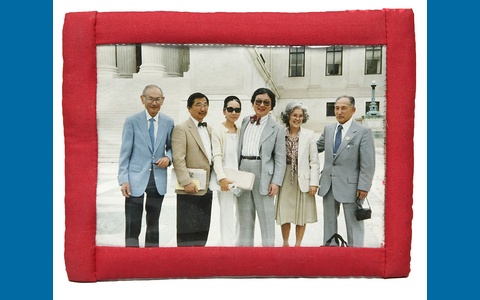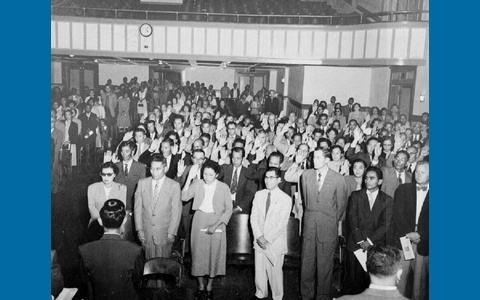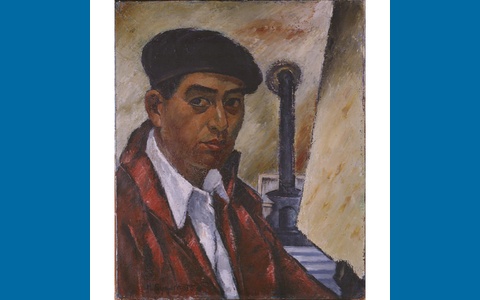Japanese American History from Early Immigration to Present Time
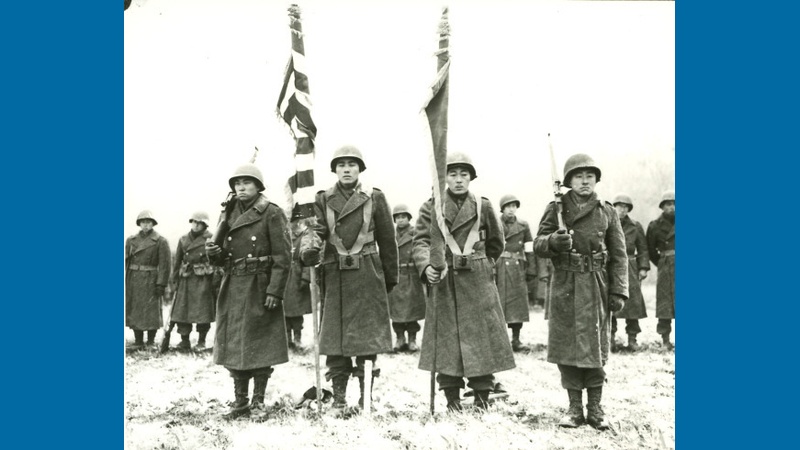
Japanese American History from Early Immigration to Present Time
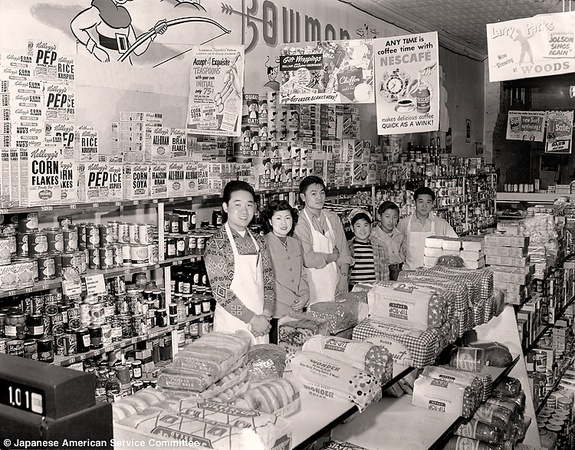
Post World War II: Resettlement (Work)
March 2nd 1942- Proclamation No. 1 is issued, which designated Military Areas 1 and 2 along West Coast: California, Oregon, Washington, and Arizona
December 17th 1944- Proclamation No. 21 is issued, which rescinds military mass exclusion orders, essentially authorizing the closing of camps.
January 2nd 1945- Restrictions preventing resettlement of West coast removed, but many restrictions still remain.
Before January 1945- 30,000 people of the original 120,000 resettled, 78% of them in 9 states: Illinois, Colorado, Ohio, Utah, Idaho, Michigan, Minnesota, New York, and New Jersey.
After January 1945- over 75,000 returned to West coast states: California, Washington, and Oregon.
--
Work
Work -
Resettlers worked at a variety of jobs. Women commonly worked as domestic servants, in Chicago's candy industry, and in the crafts. Men were in demand for low-level manufacturing jobs and niche positions like chick sexing, a job with good pay, albeit poor working conditions. A number of resettlers started their own businesses, a few of which still exist today; and a few were able to secure professional positions.
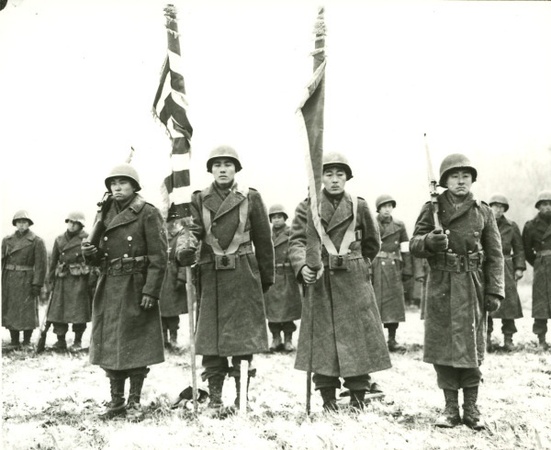
Japanese American Soldiers: 442nd Regimental Combat Team and 100th Battalion (442nd)
February 1st 1943- The 442nd Regimental Combat Team, a segregated all-Nisei unit, was activated. A call for volunteers yielded vastly different results in Hawaii than on the mainland: some ten thousand Hawaii Nisei volunteered within days, while only 1,256 mainland Nisei came forward from the camps.
June 12th 1943- Hawaiian Provisional Infantry Battalion made up of members of the National Guard 298th and 299th are activated as the 100th Infantry Battalion “Separate”
September 2nd 1943- After nearly a year and a half of training, the 100th Infantry Battalion, an all-Nisei unit from Hawaii, finally landed in Oran, North Africa. There they are met by the 442nd RCT and in June 1944, the 100th Battalion and 442nd merge into a single unit.
October 1944- In the Voges Mountains in Southeast France, 275 members of the 1st Battalion, 141st Infantry from Texas known as the “Lost Battalion” are cut-off and surrounded by Germans. Elements of the 141st and 143rd Regiments fail in a rescue attempt, and with just two days of rest, the 442nd RCT are asked to attempt a rescue. On the 4th day of the rescue mission, the first patrols reach the 211 survivors and for another 9 days after, the 442nd pursues the Germans. As a result, the 442nd suffered 216 dead, 856 wounded. After the war, the 100th Battalion became known as the “Purple Heart Battalion” and the 442nd became the most highly decorated military unit in the history of the United States Armed Forces, including 21 Medal of Honor recipients.
--
442nd
the history
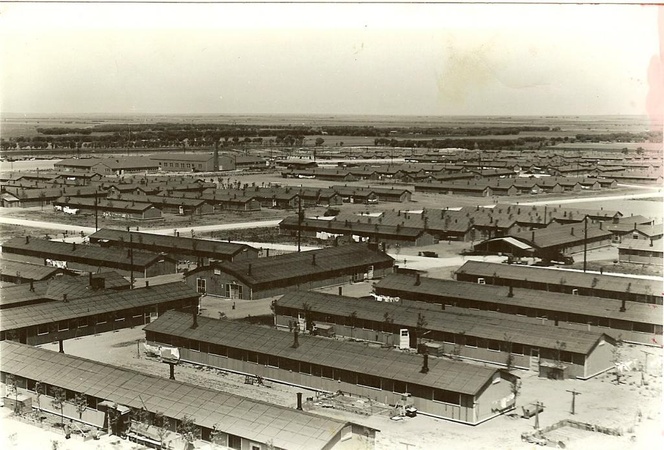
Incarceration: Department of Justice (DOJ) and War Relocation Authority (WRA) Camps (Amache buildings)
Amache buildings
Amache Internment Camp
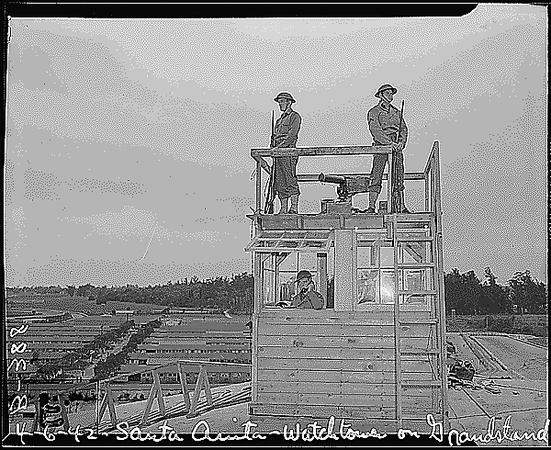
Incarceration: Assembly Centers (Santa Anita Guards- National Archive Item)
April 9th 1942- Wartime Civilian Control Agency (WCCA) was established by the military to coordinate the evacuation to inland relocation centers. However, the relocation centers were far from ready for large influxes of people, and since the Japanese Americans living in the restricted zone were considered too dangerous to freely conduct their daily business, the military decided it was necessary to find temporary "assembly centers" to house the evacuees until the relocation centers were completed.
Civilian Assembly Centers were temporary camps, frequently located at horse tracks such as Santa Anita and Tanforan where the Nissei were sent as they were removed from their communities. The assembly centers were created in a very short amount of time with little resources and because of this many people were forced to live in horse stables and in very poor conditions. There were a total of 16 assembly centers that were set up for Japanese Americans mostly in California, but also two were located in Arizona and Washington.
--
Santa Anita Guards- National Archive Item
Scope and Content:
The full caption for this photograph reads: Arcadia, California. Military police on duty in watch-tower at Santa Anita park assembly center for evacuees of Japanese ancestry. Evacuees are transferred later to War Relocation Authority centers for the duration.
ARC Identifier 537019
Local Identifier 210-G-B388
Creator(s): Department of the Interior. War Relocation Authority. (02/16/1944 - 06/30/1946)
Type(s) of Archival Materials: Photographs and other Graphic Materials
Contact(s):
Still Picture Records Section, Special Media Archives Services Division (NWCS-S), National Archives at College Park, 8601 Adelphi Road, College Park, MD, 20740-6001. PHONE: 301-837-3530; FAX: 301-837-3621; EMAIL: stillpix@nara.gov.
Production Date(s): 04/06/1942
Part Of: Series: Central Photographic File of the War Relocation Authority, compiled 1942 - 1945
Access Restriction(s): Unrestricted
Use Restriction(s): Unrestricted
Variant Control Number(s): NAIL Control Number: NWDNS-210-G-B388
Index Terms:
* Contributors to Authorship and/or Production of the Archival Materials:
o Albers, Clem, Photographer
Copy 1
Copy Status: Preservation
Contact(s):
Media
Media Type: Negative
Click on this link, then on the yellow search button (in the upper left), and type in "Santa Anita" for more related images.
http://www.archives.gov/research/arc/
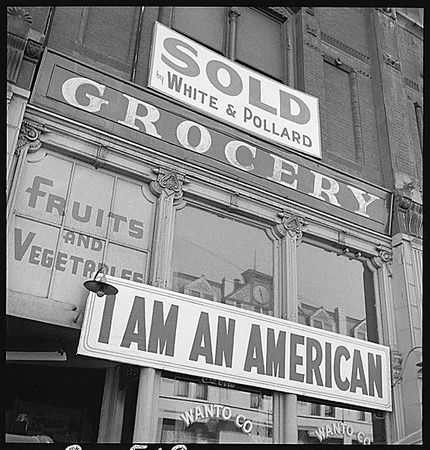
Executive/Exclusion/Evacuation Orders (Sold the store, following evacuation orders, Oakland, CA)
February 19th 1942- Presidential Executive Order 9066 was issued by U.S. President Franklin D. Roosevelt to send all Japanese and Japanese Americans to internment (concentration) camps. This order authorized the Secretary of War and U.S. armed forces commanders to declare areas of the United States as military areas "from which any or all persons may be excluded," although it did not name any nationality or ethnic group. It was eventually applied to most of the west coast states and was used against those with "Foreign Enemy Ancestry" — Japanese, Italians, and Germans. The order led to the incarceration of some 120,000 ethnic Japanese people were held in camps for the duration of the war.
February 25th 1942- The Navy informs Japanese American residents of Terminal Island near Los Angeles Harbor that they must leave in 48 hours. They were the first group to be removed in mass and suffered especially heavy losses as a result.
March 18th - 1942 The War Relocation Authority is created by order of Executive Order 9102. Milton S. Eisenhower is elected as the director or the WRA.
March 24th 1942- The first of 108 "Civilian Exclusion Orders" was issued, informing Japanese Americans of Bainbridge Island, Washington that they had to leave. For the rest of the spring and through the summer, Japanese Americans up and down the West Coast were removed neighborhood by neighborhood through these "exclusion orders." Most Japanese Americans were taken to a local "assembly center," or temporary detention camp, upon arrival.
March-May 1942- General DeWitt, Head of the Western Defense Command, issued Civilian Exclusion Order No. 34, ordering all people of Japanese ancestry, whether citizens or non-citizens, who were still living in "Military Area No. 1" to report to assembly centers where they would live until being moved to permanent "Relocation Centers." The exclusion order poster was put up around the community and gave instruction for “relocation” for those people of Japanese descent such as how many suitcases they were allowed, allowable items to take with them, and date of evactuation.
--
Sold the store, following evacuation orders, Oakland, CA
Title: Oakland, California. Following evacuation orders, this store, at 13th and Franklin Streets,
The full caption for this photograph reads: Oakland, California. Following evacuation orders, this store, at 13th and Franklin Streets, was closed. The owner, a University of California graduate of Japanese descent, placed the "I AM AN AMERICAN" sign on the store front on Dec. 8, the day after Pearl Harbor. Evacuees of Japanese ancestry will be housed in War Relocation Authority centers for the duration.
ARC Identifier: 537833
Local Identifier: 210-G-C519
Creator: Department of the Interior. War Relocation Authority. (02/16/1944 - 06/30/1946) ( Most Recent)
Type of Archival Materials: Photographs and other Graphic Materials
Level of Description: Item from Record Group 210: Records of the War Relocation Authority, 1941 - 1947
Location:
Still Picture Records LICON
Special Media Archives Services Division (NWCS-S)
National Archives at College Park,
8601 Adelphi Road, College Park, MD 20740-6001
PHONE: 301-837-3530
FAX: 301-837-3621
EMAIL: stillpix@nara.gov
Production Date: 03/13/1942
Part of: Series: Central Photographic File of the War Relocation Authority, 1942 - 1945
Scope & Content Note:
Access Restrictions: Unrestricted
Use Restrictions: Unrestricted
Variant Control Number(s): NAIL Control Number: NWDNS-210-G-C519
Copy 1
Copy Status: Preservation
Storage Facility: National Archives at College Park - Archives II (College Park, MD)
Media
Media Type: Negative
Index Terms
Contributors to Authorship and/or Production of the Archival Materials
Lange, Dorothea, Photographer
Click on this link, then on the yellow search button (in the upper left), and type in "Japanese" for more related images.
http://www.archives.gov/research/arc/
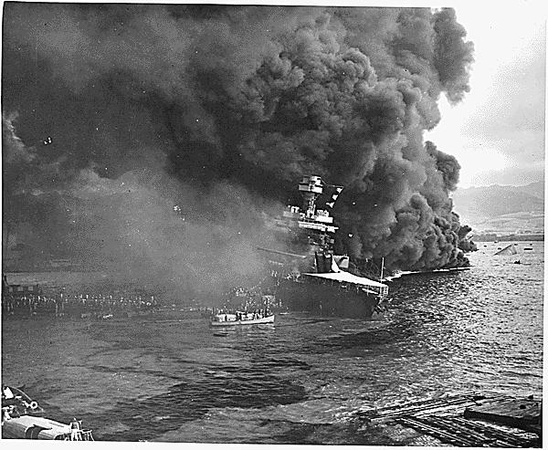
World War II- the Beginning (Attack on Pearl Harbor, Hawaii)
Pre WWII- Authorized by a blanket Presidential warrant, the government created a list known as the “ABC” list that classified potential “enemy aliens” into three categories:
Group A: Aliens who led cultural or assistance organizations
Group B: Slightly less suspicious aliens
Group C: Members of, or those who donated to, ethnic groups, Japanese language teachers and Buddhist clergy.
Oct-Nov 1941- Special representative of the state department, Curtis B. Munson investigates the “loyalty” of the Japanese Americans under the orders of President Roosevelt. Munson concentrates his investigation mainly on Japanese Americans in Hawaii, California, Oregon and Washington. Munson’s findings are stated in a report known as the Munson Report and make claims about the different degrees of loyalty depending on the generation of the person. He claims that the Issei generation’s entire cultural background is Japanese, but if allowed, many would become American citizens, and finally, their loyalty to Japan was considerably weakened by the fact that they chose to make the U.S. their home. Munson then concluded that the Nisei, or second generation Japanese Americans were born in the U.S., have received their whole education in the U.S., and that universally it is estimated that 90-98% of the Nisei were loyal to the U.S., with the exclusion of Kibei Nisei. The Kibei Nisei generation is the group of Japanese people that were born in the U.S., but received part of their education in Japan and were considered the most dangerous element and closer to the Issei generation than the Nisei. Finally, the Sansei, or third generation during this time were all still babies or very young children and were disregarded for the purpose of the survey.
Dec 7th 1941- The Japanese Navy conducted a surprise strike against the United States naval base at Pearl Harbor, Hawaii. It was intended as a preventative action to keep the U.S. Pacific Fleet from influencing the war Japan was planning to wage in Southeast Asia against Britain, the Netherlands, and the United States. Although, the attack resulted in the U.S. declaring war on Japan and becoming militarily involved in World War II.
--
Attack on Pearl Harbor, Hawaii
Title: Naval photograph documenting the Japanese attack on Pearl Harbor, Hawaii which initiated US participation in World War II.
This photograph was originally taken by a Naval photographer immediately after the Japanese attack on Pearl Harbor, but came to be filed in a writ of application for habeas corpus case (number 298) tried in the US District Court, District of Hawaii in 1944. The case, In Re Lloyd C. Duncan related to imposition of martial law in Hawaii during World War II.
Navy's caption: Abandoning ship aboard the USS CALIFORNIA after the ship had been set afire and started to sink from being attacked by the Japanese in their attack on Pearl Harbor on Dec. 7, 1941., 12/07/1941
ARC Identifier: 295980
Creator: U.S. District Court for the District of Hawaii. (1959 - ) (Most Recent)
Type of Archival Materials: Photographs and other Graphic Materials
Level of Description: Item from Record Group 21: Records of District Courts of the United States, 1685 - 1991
Location:
NARA's Pacific Region (San Bruno) (NRHSA)
1000 Commodore Drive, San Bruno, CA 94066-2350
PHONE: 650-238-3501,
FAX: 650-238-3510,
EMAIL: sanbruno.archives@nara.gov
Production Date: 12/07/1941
Part of: File Unit: In Re Lloyd C. Duncan, 1941 - 1944
Access Restrictions: Unrestricted
Use Restrictions: Unrestricted
Variant Control Number(s): NAIL Control Number: NRHS-21-DCHIHIHC-HC298-298REXH14(5)
Copy 1
Copy Status: Preservation-Reproduction-Reference
Storage Facility: NARA's Pacific Region (San Bruno, CA)
Media
Media Type: Photographic Print
Index Terms
Contributors to Authorship and/or Production of the Archival Materials
Department of the Navy. Fourteenth Naval District., Photographer
Click on this link, then on the yellow search button (in the upper left), and type in "Pearl Harbor" for more related images.
http://www.archives.gov/research/arc/
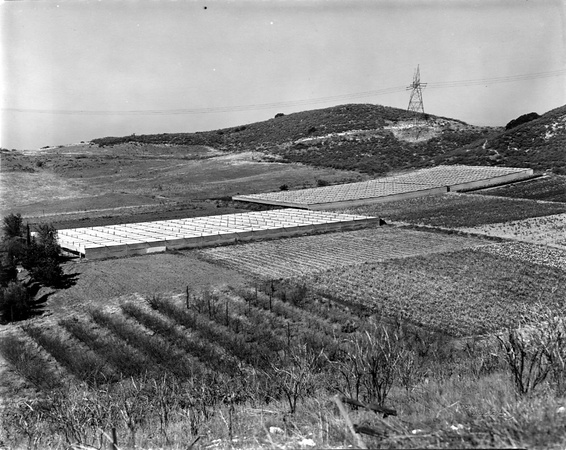
Alien Land Laws/Immigration Act (Aerial View of Kawakami Family Ranch)
1913- Alien Land Laws were enacted by various western states that prevented Japanese (and other Asian) immigrants from purchasing agricultural land. First enacted in the 1910s, the laws generally remained in effect until after World War II. California was the first state to enact an Alien Land Law in 1913 that prevented ownership of land by “aliens ineligible to citizenship” and restricted leases by such people to three years.
1922- On October 16, 1914, Takeo Ozawa filed for U.S. citizenship but his petition was denied by the U.S. District Attorney of the District of Hawaii. Eventually, the case was appealed up to the U.S. Supreme Court and Takao Ozawa, a Japanese man, was found ineligible for naturalization by the Supreme Court. In 1922, Takao Ozawa filed for United States citizenship under the Naturalization Act of June 29, 1906 which allowed white persons and persons of African descent or African nativity to naturalize. He did not challenge the constitutionality of the racial restrictions, and instead, attempted to have the Japanese classified as "white." Justice George Sutherland found that only Caucasians could be considered white, and therefore the Japanese, were not white and instead were members of an "unassimilable race," lacking provisions in any Naturalization Act.
1924- A United States Federal Law was passed known as the Immigration Exclusion Act of 1924, that essentially ended all further Japanese immigration to the United States. The enactment of this act, with its provisions of Japanese exclusion, represented a final victory after nearly two decades of agitation by the anti-Japanese movement. The act infuriated Japan and adversely affected U.S.-Japan relations. Japanese immigration would be curtailed until 1952 (with the exception of post-World War II war brides of American servicemen).
--
Aerial View of Kawakami Family Ranch
Image Contributed by: Jane Muranaka
Names of people:
Date: circa early 1950s
Place: Kwakami family ranch in Sunland, California
Photograph by: Toyo Miyotaka
Original Photo size:
Description: This is one of the photos that Saichi, a first-generation Issei, would have professionally shot each New Year. This land was purchased by the Kawakami family in 1933 and placed under Chizu Kawakami's name. Chizu, Saichi's wife, was born in the United States and therefore was not blocked by the Alien Land Law. Thus, unlike many Japanese Americans, the Kawakami's owned their land throughout their internment so that they had a home to which to return when they were released.
Pictured are peach blossoms and renunkulas. This photo reflects the arduous labor and time it took for Saichi and his family to get back on their feet after Internment. Immediately after the family was released, some members stayed at Manzanar while Saichi went back to the ranch in Sunland to replant the gardens and to wait for the tenants to which the home had been rented to finally leave. Once the rest of the Kawakami's returned it would take years for the family to re-establish their lives.
© California State University, Northridge 2008
For more information about this project, please contact:
Edith Chen, Professor Asian American Studies Dept.
18111 Nordhoff St., JR 340
Northridge, CA 91330-8251
edith.chen@csun.edu
818-677-4966
Nancy Takayama
San Fernando Valley Japanese American Community Center
nt.high.mtn@juno.com
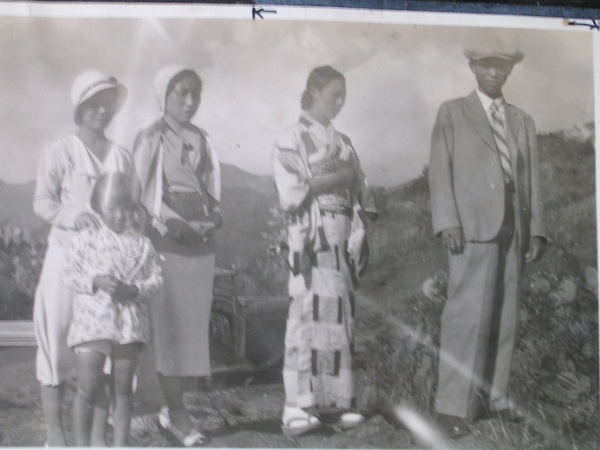
Immigration: The Picture Bride Era (Picture Bride 1932)
1908-1924- After the Gentleman’s Agreement was put into action in 1907, Male laborers found it difficult to find wives, therefore the Picture Bride practice became a popular way in which a male laborer was able to marry, and a Japanese women would be able to immigrate to America. First, a headshot of the man was sent back to Japan to his parents or a broker and a bride was matched with the man by the broker. A marriage by proxy is conducted and the marriage is registered and the “wife” applies for a visa. An estimated 20,000 picture brides came to the U.S. between 1908-1924. Upon the arrival of the Picture Brides to the United States, many found that their new husbands were many years older than they appeared in the photograph they sent of themselves. Many picture brides were completely unaware of the difficulties they faced having to adjust to their new American lifestyle of working on sugar plantations in Hawaii or running
--
Picture Bride 1932
Photograph contributed by Bill Watanabe. Names of people: Katsuye Furayama, Densaku Furayama, and two members of the Watanabe family
Date: 1932
Place: Honolulu, Hawaii U.S.A.
Photograph by: Unknown
Photo size: Unknown
Description: Katsuye Furayama, a young picture bride, and her brother Densaku visiting relatives in Hawaii before meeting her husband, for the first time, Rokuro Watanabe at the port in San Pedro, California in 1932.
© California State University, Northridge 2008
For more information about this project, please contact:
Edith Chen, Professor Asian American Studies Dept.
18111 Nordhoff St., JR 340
Northridge, CA 91330-8251
edith.chen@csun.edu
818-677-4966
Nancy Takayama
San Fernando Valley Japanese American Community Center
nt.high.mtn@juno.com
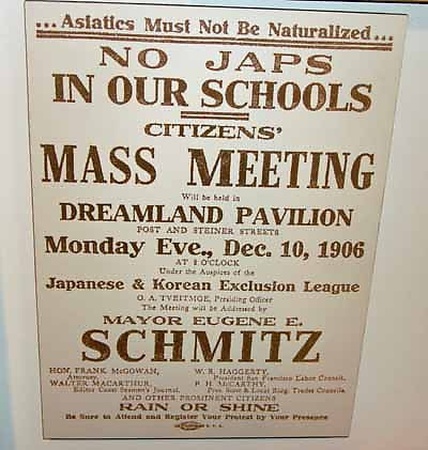
Immigration: Early Life in America/Discriminatory Laws (Anti-Japanese)
1905- The Japanese and Korean Exclusion League was established. The league created 4 policies in which they would follow:
1. Extension of the Chinese Exclusion Act to include Japanese and Koreans
2. Exclusion by League members of Japanese employees and the hiring of firms that employ Japanese
3. Initiation of pressure the School Board to segregate Japanese from white children
4. Initiation of a propaganda campaign to inform Congress and the President of this "menace".
1907- Prompted by anti-Asian racial antagonism over laborers coming to American an informal agreement known as the Gentleman’s Agreement was formulated between the United States. The agreement stated that the U.S. would not impose restriction on Japanese immigration or students, and Japan would not allow further emigration to the U.S. The goal was to reduce tension between the two powerful Pacific nations. The agreement was never ratified by Congress, and was superseded by the Immigration Act of 1924, which legally banned all Asians from migrating to America and nullified the Gentlemen’s Agreement.
--
Anti-Japanese
Gentleman’s Agreement of 1907 San Francisco attempted to segregate Japanese and Korean children from schools. The Japanese government appealed to the US government, promising to end immigration of male laborers to the United States if Japanese American children were allowed to remain in San Francisco schools.
*This photograph was taken from the Japanese American National Museum's ongoing exhibit, "Common Ground: The Heart of the Community."
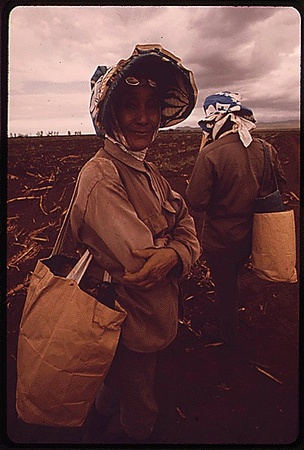
Immigration: Japanese Arrival in Hawaii (Japanese Sugarcane worker)
1868- First group of contract laborers (141 men, 6 men, 2 children) arrive in Hawaii, these people are known as the Gannen-mono or “first year people”. Many of these Japanese who came to Hawaii were farmers and peasants from southern Japan, having suffered a series of crop failures at home, eagerly filled Hawai’i jobs promising high wages. Though these people soon found that plantation life was harsh; involving backbreaking, tedious work, primitive living conditions, and bosses who could be physically brutal. In addition, the pay was poor as person of Japanese descent only got paid $4.00 a month, which was significantly lower than contract workers of other ethnic groups. Of the 147 workers sent to Hawaii, only 13 completed their 3-year contracts and 40 returned to Japan without completing their contracts. The project was deemed a failure and it was not until around 20 years later when Japanese were sent to Hawaii again. 1882: The Chinese Exclusion Act of 1882 is passed, which allowed the U.S. to suspend Chinese immigration, a ban that was intended to last 10 years. As a result, the United States turned to other countries to hire laborers to come be a part of their immigrant workforce. With Hawaii’s booming economy mainly based on sugar production, the U.S. turned to Japan and began to hire Japanese to work on Hawaii’s sugar plantations. 1885: 944 new immigrants who are more suited for hard farm labor arrive in Hawaii as contract laborers on 3-year contracts to work on sugar cane plantations. Most of the farmers were from 4 southern prefectures of Japan: Hiroshima, Yamaguchi, Fukuoka and Kumamoto. Life on the plantation was very difficult with extremely poor pay and living conditions. In addition there was a level of discrimination that occurred on the plantations between people of various ethnicities. Upon arrival to the plantation, each laborer was given a bango, which was a small metal medallion that was worn around each laborers neck that had their identification number on it. These bango were also made into various shapes according to ethnicity, and the shape determined a different level of pay for each group of workers. Of all of the different ethnicities of people working on the plantation such as Chinese, Filipino, Korea, Portuguese, and African American, the Japanese were paid significantly less for the same amount of work. In spite of the harsh conditions, the migration was a success. By 1894- 20,084 Japanese migrated to Hawaii, which made up over a third of the overall population in Hawaii. These first generation immigrants are known as the “Issei” and are people who were born in Japan, but immigrated to the U.S. Many of the Japanese from the first group of contract laborers who came to Hawaii, stayed in Hawaii and were the Issei pioneers that began to develop a Japanese American community in Hawaii. This image comes from the National Archive, for more information please refer to thier website: http://www.archives.gov/research/arc/ -- Creator(s): Environmental Protection Agency. (12/02/1970 - ) Type(s) of Archival Materials: Photographs and other Graphic Materials Contact(s): Still Picture Records Section, Special Media Archives Services Division (NWCS-S), National Archives at College Park, 8601 Adelphi Road, College Park, MD, 20740-6001. PHONE: 301-837-3530; FAX: 301-837-3621; EMAIL: stillpixorder@nara.gov. Production Date(s): 10/1973 Part Of: Series: DOCUMERICA: The Environmental Protection Agency's Program to Photographically Document Subjects of Environmental Concern, compiled 1972 - 1977 Access Restriction(s): Unrestricted Use Restriction(s): Unrestricted Variant Control Number(s): Agency-Assigned Identifier: 194/17/011597 NAIL Control Number: NWDNS-412-DA-11597 Index Terms: •Subjects Represented in the Archival Material: ◦Environmental protection ◦Natural resources ◦Pollution ◦Maui (Maui, Hawaii, United States, North and Central America) island •Contributors to Authorship and/or Production of the Archival Materials: ◦O'Rear, Charles, 1941-, Photographer This image comes from the National Archive, for more information please refer to thier website: http://www.archives.gov/research/arc/
Immigration: Early Visitors (Treaty of Kanagawa, 03/31/1854 )
1841- Fourteen-year old Japanese fisherman, Manjiro Nakahama, was shipwrecked and rescued by an American whaler ship and ends up in Bedford, Massachusetts. Nakahama is considered one of the first visitors to the United States, and also the first Japanese to speak English effectively. Eventually he returned to Japan in 1852 and assumed various diplomatic posts. 1850- Hamada Hikozo, also know as “Joseph Heco” is rescued by an American ship and deported back to Japan, although his trip back to Japan was intercepted by a Hong Kong ship and he is taken to the United States. On July 7, 1858, Joseph Heco became the first person of Japanese descent to become a naturalized citizen of the United States. 1854- Commodore Matthew Perry of the U.S. Navy sails to Tokyo Bay and on March 31st, the Convention of Kanagawa or Kanagawa Treaty was concluded between the Commodore and the Empire of Japan. The treaty opened the Japanese ports of Shimoda and Hakodate to U.S. trade, guaranteed the safety of shipwrecked U.S. sailors and established a permanent consul. 1860’s- The feudal system in Japan came to an end and “restoration” of the Imperial rule in Japan began, a time period known as the Meiji Restoration. This economic and political change resulted in an increase of land tax, which caused loss of farms, which in turn affected unemployment. The Meiji Restoration set the stage for a many Japanese to leave the country and find other places to live in hopes of a better life. This image was taken from the National Archive website, for more information please refer to this website: http://www.archives.gov/research/arc/ -- Creator(s): U.S. Government. (03/04/1789 - ) Type(s) of Archival Materials: Textual Records Contact(s): Archives I Reference Section, Textual Archives Services Division (NWCT1R), National Archives Building, 7th and Pennsylvania Avenue NW, Washington, DC, 20408. PHONE: 202-357-5385; FAX: 202-357-5936; EMAIL: Archives1reference@nara.gov. Production Date(s): 03/31/1854 Part Of: Series: Perfected Treaties, compiled 1778 - 1945 Access Restriction(s): Unrestricted Use Restriction(s): Unrestricted Specific Records Type(s): treaties General Note(s): Exhibit History: "American Originals," December 1995 - December 1996, National Archives Rotunda, Washington, DC, Exhibit No. 624.0051. "Documents of Liberty," June 1986 - July 1986, Federal Hall, New York, NY, Exhibit No. 1024.0002. Matthew Perry Exhibition, October 1968 - November 1968, Smithsonian Institution, Washington, DC. Microform Publication(s) Available: M1247, Perfected International Treaties ("Treaty Series"), 1778-1945. Variant Control Number(s): NAIL Control Number: NWCTB-11-ITAPI159E9-TS(AO)183 NAIL Control Number: NWDT1-11-ITA-PI159E9-TS(AO)183 Index Terms: •Subjects Represented in the Archival Material: •Contributors to Authorship and/or Production of the Archival Materials: ◦Perry, Matthew Calbraith, 1794-1858, Other This image was taken from the National Archive website, for more information please refer to this website: http://www.archives.gov/research/arc/
Loyalty Questions and Heart Mountain Fair Play Committee (Newspaper article from Rocky Shimpo: "Wyoming Draft Resistance Has Authorities Stumped", 03/10/1944 )
Fall, 1943- All people in camps were asked to fill out a loyalty questionnaire and based on responses to the loyalty questions, the "loyal" and "disloyal" were segregated. The "disloyal" from the various camps were sent to Tule Lake, which became a segregation center, while the "loyal" from Tule Lake were sent to other camps. The two most controversial questions listed on the loyalty questionnaire were questions 27 and 28 which asked, “Are you willing to serve in the armed forces of the United States on combat duty, wherever ordered?” and “Will you swear unqualified allegiance to the United States of America and faithfully defend the United States from any and all attack by foreign or domestic forces and foreswear any form of allegiance to the Japanese Emperor, or any other foreign government, power, or organization?” January 26th 1944- Heart Mountain Fair Play Committee, destined to become the only organized resistance to the military draft, was formed at a rally. Made up of "loyal" Nisei headed by Frank Emi, the Fair Play Committee members refused to report for draft physicals unless they and their families were granted their civil rights. In result of the Fair Play Committee’s resistance movement, seven members were convicted of conspiracy against the Selective Service Act, and 85 were imprisoned for draft law violations. This image comes from the National Archive, please refer to this website for more information: http://www.archives.gov/research/arc/ -- Creator(s): U.S. District Court for the District of Wyoming. (1892 - ?) Type(s) of Archival Materials: Textual Records Contact(s): NARA's Rocky Mountain Region (Denver) (NRGA), Building 48, Denver Federal Center, West 6th Avenue and Kipling Street, Denver, CO, 80225-0307. PHONE: 303-407-5740; FAX: 303-407-5709; EMAIL: denver.archives@nara.gov. Production Date(s): 03/10/1944 Part Of: File Unit: United States of America vs. Kiyoshi Okamoto, et. al., 1943 - 1944 Access Restriction(s): Unrestricted Use Restriction(s): Unrestricted Specific Records Type(s): exhibition records Variant Control Number(s): NAIL Control Number: NRG-21-E9-4930-EXHIBIT6 Index Terms: •Subjects Represented in the Archival Material: ◦Emi, Frank Seishi ◦Horino, Isamu ◦Horino, Sam ◦Iwasa, James ◦Kubota, Guntaro ◦Matsumoto, James Royal ◦Matsumoto, Utaka ◦Nakadate, Paul Takeo ◦Okamoto, Kiyoshi ◦Okamoto, Robert ◦Omura, James ◦Omura, James Matsumoto ◦Omura, Jimmie ◦Tamesa, Minoru ◦Wakaye, Ben ◦Wakaye, Tsutomu This image was taken from the National Archive website, please look here for more information about this image: http://www.archives.gov/research/arc/
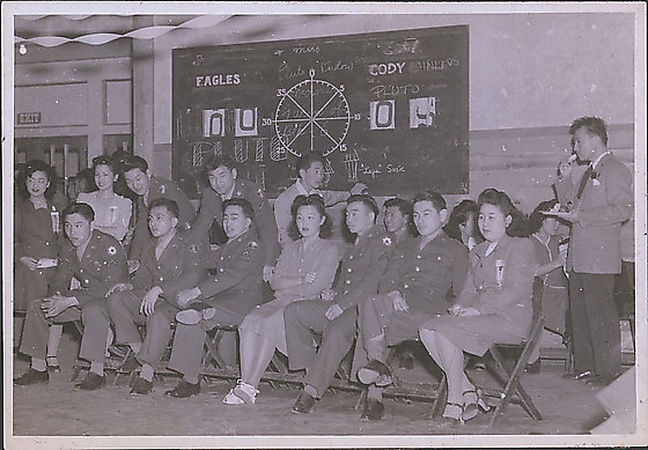
Japanese American Soldiers: Military Intelligence Service and other Military Units (MIS GI's at Fort Snelling)
November 1st 1941- Forth Army Intelligence School opens in San Francisco, as a language school for Japanese Americans drafted into the Military Intelligence Service (MIS). About 6,000 people served in the MIS, 85% of them Nisei Japanese Americans. The majority of the Nisei served in the MIS as linguists and in other non-combative roles, interpreting captured enemy documents and interrogating prisoners of war. It is believed by the Chief of Intelligence that the MIS contributions “saved countless lives and shortened the war by two years”.
July 1st 1943- Woman’s Army Auxiliary Corps (WAACs) is replaced by Women’s Army Corps (WACs). Three months later, Japanese American women are allowed to volunteer. Over 300 Japanese American women serve, 47 in the MIS.
Other Japanese American Units iclude:
· 1399th Engineer Construciton Battalion
o Constructed vital defense installations on Oahu, and were awarded the Meritorious Service Award in October 1945.
· 232nd Combat Engineer Company
o Mainly attached to the 442nd, but was a “separate” unit. Was awarded 100 Purple Hearts
· 1800th Engineer General Service Battalion
o special unit for Japanese, Italian, and German American soldiers the government wanted to keep under observation.
This image comes from the online collection of the Japanese American National Museum, please refer to this website for more information:
http://www.janm.org/collections
--
MIS GI's at Fort Snelling
Description
1 photographic print : b&w;
H: 5 in, W: 7 in
Heart Mountain, Wyo., 1945
Group of GI's from Fort Snelling and women at what appears to be a social event, Heart Mountain concentration camp, Wyoming, 1945. Five men and two women are seated in a row on wooden chairs, while others stand or are seated behind them. 8 of the men are in United States Army uniforms, the other 2 are in civilian clothes. Blackboard on wall has a scoreboard and the names "Eagles" and "Cody" written across top with score below "00" and "05." Man in suit on far right stands while eating from plate in hand. Three of the women have ribbons on their proper left chest.
Inscription
Written in pencil on back, BRC: M.I.S. GI's / Fort Snelling / MORI SHIMADA. Inscription on page of original photograph album: MIS boys from Snelling.
Part of the Japanese American National Museum's permanent collection(92.10.2CJ). Gift of Mori Shimada.
This image was taken from the Japanese American National Museum's online catalogue, for more information about this image please go to:
http://www.janm.org/collections/item/92.10.2CJ/
All requests for permission to publish, reproduce, or quote from materials in this collection must be submitted to the Hirasaki National Resource Center at the Japanese American National Museum (hnrc@janm.org).
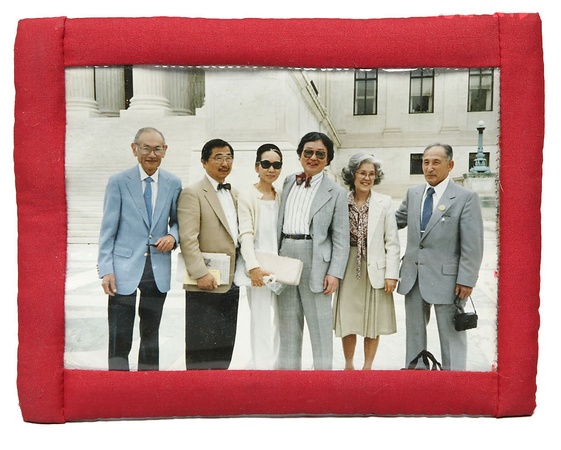
Japanese Americans and the U.S. Supreme Court (NCJAR Photo)
Four cases arose during WWII that challenged the constitutionality of curfew and exclusion orders as well as the incarceration of Japanese Americans in WRA camps.
Curfew:
June 21st 1943- court ruled against both Gordon Hirabayashi and Minoru Yasui supporting their decision by claiming that, “the danger of espionage and sabotage to our military resources was imminent, and that the curfew order was an appropriate measure to meet”.
Exclusion:
December 18th 1944- court ruled against Korematsu, citing the same “military necessity” rationale used in the prior two cases
40 years later, all three cases are re-opened and the supreme court filed a Coram Nobis (writ of error) for Hirabayashi, Korematsu, and Yasui cases. Unfortunately, Min Yasui died in 1986 before the final judgment of his appeal making his case moot. Hirabayashi and Korematsu had convictions for curfew and exclusion order violations vacated for government misconduct.
1988- Fred Korematsu was awarded the Medal of Freedom by President Clinton for his life-long stand for freedom.
Unlawful Detention:
July, 1942- Mitsuye Endo filed a petition for writ of Habeas Corpus while incarcerated at the Tanforan Assembly Center. Endo was a citizen of the United States, a state employee, had never been to Japan, did not speak Japanese, and had a brother in the army, making her the perfect plaintiff.
December 18th 1944- Court ruled in her favor, their decision based on technical issue of WRA authority to apply leave regulations to loyal citizens. Knowing the pending Endo decision, War Department issued a press release one day earlier, which effectively closed the camps.
--
NCJAR Photo
Photograph commemorating the efforts of the National Council for Japanese American Redress (NCJAR) to win redress through a class action suit against the government. 1987
Photograph taken by Doris Sato.
Fabric frame made by NCJAR member Hannah Tomiko Holmes.
Figures represented: Fred Korematsu, Gordon Hirabayashi, Michi Weglyn, William Hohri, Aiko Herzig and Harry Y. Ueno. Gift of Hannah Tomiko Holmes (deaf WWII internee)
Japanese American National Museum permanent collection
Accession #88.4.1b
Location 16.SH.F.2.BOX5
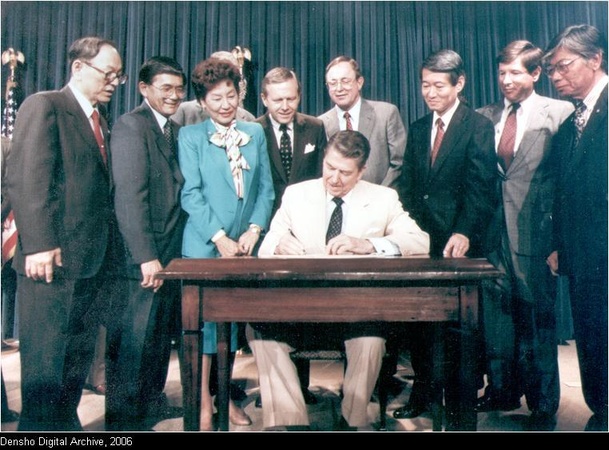
Asian Civil Rights Activism/Redress (Civil Liberties Act of 1988 - Victory!)
November 6th 1962- Daniel K. Inouye of Hawaii becomes the first Japanese American to be elected as a United States senator.
1960s- headed by younger Nisei Sansei Japanese Americans, a series of new Asian American organizations are established.
1968- the first Ethnic Studies program at San Francisco State University is established after a year-long student strike.
1970s- Plans for Redress begin to emerge: In San Francisco, the JACL National Committee for Redress is formed. In Seattle, the National Council for Japanese American Redress. In Los Angeles, the Little Tokyo People’s Rights Organization, Los Angeles Community Coalition for Redress and Reparations, and the National Coalition for Redress and Reparations (NCRR).
1978- National JACL met with 4 Nikkei Congressional Legislature: Senators Inouye and Matsunaga of Hawaii, and Representatives Mineta and Matsui of California. After a long discussion, Senator Inouye suggested establishing a commission to study internment.
July 31st 1980- the Commission on Wartime Relocation and Internment of Civilians (CWRIC) was established. There were many hearings held in major cities such as Los Angeles, and many former internees testified in emotional testimony.
August 10th 1988- Civil Liberties Act of 1988 was signed into law by President Reagan and the law included:
· A formal government apology to all those incarcerated.
· $20,000 individual payments, provided they were living when the Civil Liberties Act of 1988 was signed into law.
· Establish $1.25 million Civil Liberties Fund (later increased to $50 million)
· Entitlement of $1.5 billion began in October, 1990.
--
Civil Liberties Act of 1988 - Victory!
When President Ronald Reagan signed the Civil Liberties Act of 1988 on August 10th, it marked a day of victory, finally, for the Japanese American community and all those who had been so invested in the Redress and Reparations campaign. The hours and hours of work everyone had contributed were instantaneously completely justified. It was all worth it.
Tears of joy were wept, and inexpressible happiness and relief filled that room when Reagan signed the bill. It was indeed, a momentous occasion for Japanese Americans who gave their all to this cause. Sox Kitashima recalls that “the community was on cloud nine and ready to burst.” (95)
To address gender, notice that there is only one woman in this picture. Although the Japanese American community and the Redress/Reparations movement are no exception to being in situations where women are underrepresented in politics and head positions at the federal level, it is worthwhile to be aware of the existence of such dynamics. Also of notable presence in this picture are Congressmen Norman Mineta and Robert T. Matsui, two men who, with the complementary work of others like Sox, Aiko, Cherry and Lorraine, were instrumental in the signing and passage of this bill.
Source: Kitashima, Tsuyako Sox and Morimoto, Joy K., The Birth of an Activist: The Sox Kitashima Story. San Mateo: Asian American Curriculum Project, 2003 (pp. 92-95)
Photo: Densho Digital Archive, http://archive.densho.org/main.aspx. Photo/Document Collections: Kinoshita Collection
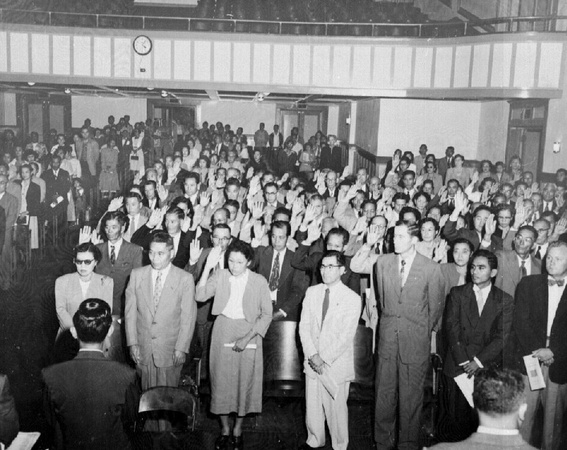
Post World War II: Naturalization Laws/Civil Rights (Naturalization)
Jan. 19th 1948- The United States Supreme Court reverses the ruling of the California Supreme Court in the Oyama v. California case, ruling the Alien Land Law unconstitutional.
December 24th 1952- Immigration and Naturalization Act, also known as the McCarran-Walter Act which upheld the national origins quota system established by the Immigration Act of 1924, reinforcing this controversial system of immigrant selection. It also ended Asian exclusion from immigrating to the United States and introduced a system of preferences based on skill sets and family reunification.
1956- California’s Alien Land Law repealed.
August 21st 1959- Hawaii becomes 50th State.
February 19th 1976- Proclamation #4417 is issued by President Ford, rescinding Executive Order 9066. The proclamation admitted that the evacuation was a mistake, but did not contain a formal apology to those impacted.
--
Naturalization
A large group of people in a room with right hand raised facing viewer as they swear oath for citizenship in Hilo, Hawaii. After the Walter McCarran Act allowed Asians to apply for citizenship, this is the first swearing in.
This is one of the notable artifacts on display in "Common Ground: The Heart of Community", an ongoing exhibition of the Japanese American National Museum.
Gift of the Saburo Toyama Family, Japanese American National Museum (97.208.1)
* Copyright is held by the Japanese American National Museum. Short-term educational use with limited circulation is permitted. For all other uses, please contact the Hirasaki National Resource Center at the Japanese American National Museum hnrc@janm.org
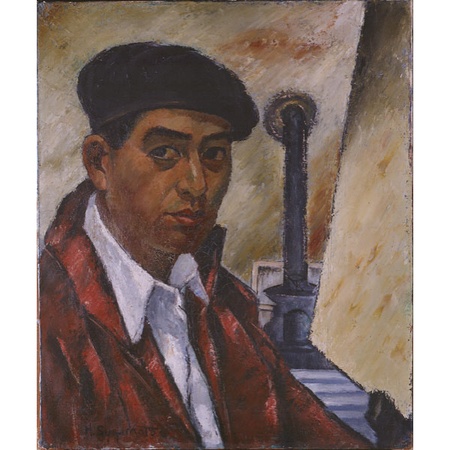
Shaping Japanese American Community (Henry Sugimoto, "Self Portrait")
Japanese Communities:
Since the immigration of the Japanese to the U.S., the formation of Japanese communities has continued to take place across the country. Today, such communities include: “Little Tokyo” in Los Angeles, and Japantown or Nihonmachi in San Francisco and San Jose. These communities which was once home to great numbers of Japanese Issei and Nissei, has now taken on more of a historical and cultural role within the Japanese American community. It is events such as Nissei Week and the Cherry Blossom Festival that keep these communities stay active and will help continue the traditions once implemented by the issei generation.
Famous Japanese Americans:
Artists- Henry Sugimoto (painter), Isamu Noguchi (artist)
Actors/Performers: East West Players, Pat Morita (Karate Kid), George Takei (Start Trek series)
Athletes: Tommy Kono (Olympic gold medalist in weightlifting- 1952, 1956), Kristi Yamaguchi (Olympic gold medalist in figure skating-1992), Bryan Clay (Olympic gold medalist in decathlon- 2008).
Politicians: Daniel Inouye (served as Senator of Hawaii), George Ariyoshi (served as Governor of Hawaii)
--
Henry Sugimoto, "Self Portrait"
Self portrait of Henry Sugimoto. Artist has depicted himself in ¾ profile, at left, with a blank canvas in front of him on an easel, at right. A potbelly stove is visible between the two in the background. Sugimoto wears a black beret and a red jacket with collar up over a white shirt. He gazes out directly at viewer.
History
The stove in the background and general atmosphere of the room suggest that this portrait may have been done in camp. The extremely naturalistic rendering of the face and clothing differs from Sugimoto's camp period work; however, it might have been used for the self-portrait, where exceptionally close study of the subject was possible, and may not be indicative of a style shift (Sugimoto's portrait of his wife, done at the Fresno Assembly Center, is similar in style). The signature is followed by a blotted out area which may be a location or date. (KE)
Inscription
Signed in medium, bottom left: H. Sugimoto. Written on back: Self Portrait/ Painted this portrait 1931/ 1931 / (In Japanese) Pari nite / Henry Sugimoto.
painting
H: 21.75 in, W: 18 in, D: .75 in
canvas
oil
Paris, France, 1931
(92.97.106)
Gift of Madeleine Sugimoto and Naomi Tagawa, Japanese American National Museum
Henry Sugimoto Collection
To see other collections:
Japanese American National Museum Collections Online
Copyright is held by the Japanese American National Museum. Short-term educational use with limited circulation is permitted. For all other uses, please contact the Hirasaki National Resource Center at the Japanese American National Museum (hnrc@janm.org)
This collection provides a general overview of Japanese American History discussing some of the most significant and influential events that took place from the mid 1800's to the present.
Some of the images in this album are from the National Archive and can be found at the following website:
http://www.archives.gov/research/arc/
The new Nikkei Album!
We’re excited to share our redesigned Nikkei Album. It’s a work-in-progress, so please have patience as we add more features and functionality. It will be an exciting tool for our community to easily share photos, videos, and text! Learn MoreNew Site Design
See exciting new changes to Discover Nikkei. Find out what’s new and what’s coming soon! Learn More
Discover Nikkei Updates



See exciting new changes to Discover Nikkei. Find out what’s new and what’s coming soon!


